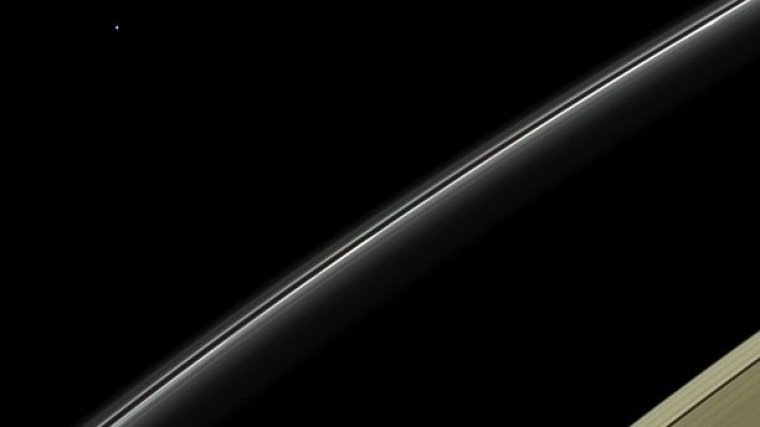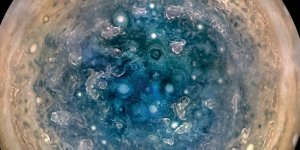| News / Space News |
Cassini spies the ice-giant planet Uranus
NASA | MAY 3, 2014
NASA's Cassini spacecraft has captured its first-ever image of the pale blue ice-giant planet Uranus in the distance beyond Saturn's rings.

Uranus, imaged by Cassini for the first time. Credit: NASA/JPL-Caltech/Space Science Institute
The robotic spacecraft briefly turned its gaze away from the ringed beauty of Saturn on April 11, 2014, to observe the distant planet, which is the seventh planet from the sun.
This view was acquired by the Cassini narrow-angle camera at a distance of approximately 614,300 miles (988,600 kilometers) from Saturn on April 11, 2014. Image scale at Uranus is approximately 16,000 miles (25,700 kilometers) per pixel. Image scale at Saturn's rings is approximately 4 miles (6 kilometers) per pixel. In the image, the disk of Uranus is just barely resolved. The solar phase angle at Uranus, seen from Cassini, is 11.9 degrees.
The planets Uranus and Neptune are sometimes referred to as "ice giants" to distinguish them from their larger siblings, Jupiter and Saturn, the classic "gas giants." The moniker derives from the fact that a comparatively large part of the planets' composition consists of water, ammonia and methane, which are typically frozen as ices in the cold depths of the outer solar system.
Jupiter and Saturn are made almost entirely of hydrogen and helium, with smaller percentages of these ices.
When this view was obtained, Uranus was nearly on the opposite side of the sun as seen from Saturn, at a distance of approximately 28.6 astronomical units from Cassini and Saturn.
An astronomical unit is the average distance from Earth to the sun, equal to 93 million miles (150 million kilometers). At their closest - once during each Saturn orbit of nearly 30 years - the two planets approach to within about 10 astronomical units of each other.
YOU MAY ALSO LIKE



